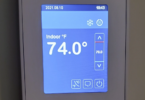
Use of the opioid overdose rescue drug naloxone has skyrocketed in recent years. But only 1 in 70 chronic pain patients at high risk of overdose are receiving it, according to a new report from the Centers for Disease Control and Prevention.
In 2017, 47,600 Americans died from an overdose involving opioids. And the number of deaths would be much higher were it not for the increasing availability of naloxone.
“Thousands of Americans are alive today thanks to the use of naloxone,” said U.S. Health and Human Services Secretary Alex Azar in an Aug. 6 press announcement of the CDC findings.
But many more lives could be saved if more health care providers offered naloxone to all patients at risk for overdose, according to the CDC report.
The CDC’s 2016 guidelines for prescribing opioids for chronic pain recommended doctors prescribe naloxone for all patients taking more than the equivalent of 50 mg of morphine a day. Since then, a handful of states have required doctors to co-prescribe naloxone and warn patients about the risk of high doses of opioids.
In addition, nearly all states have enacted so-called good Samaritan laws, allowing private citizens to administer the overdose-reversal medication without legal liability. And most states in the past five years have called on pharmacies to provide the easy-to-administer medication to anyone who wants it without a prescription, according to the Network for Public Health Law.
According to the CDC, the number of naloxone prescriptions doubled between 2017 and 2018, rising from 270,000 to 556,000. But 9 million prescriptions would be needed to provide one to each person with a high-dose opioid painkiller prescription, the report found.
“It is clear from the data that there is still much needed education around the important role naloxone plays in reducing overdose deaths,” said CDC Director Robert Redfield.
The CDC’s analysis also found wide disparities between U.S. counties in the rate of naloxone prescribing, with higher rates in urban areas and lower rates in rural areas. Overall, naloxone dispensing was 25 times greater in the highest-dispensing counties than in the lowest-dispensing counties.
Regionally, the highest rate of naloxone prescribing was in the South and the lowest rate was in the Midwest.
U.S. Surgeon General Jerome Adams recommended widespread use of naloxone last April. Since then, HHS has called on physicians to co-prescribe naloxone to patients taking relatively high doses of opioid painkillers and to educate patients on the risk of overdose.
Surgeons, primary care doctors and pain doctors were the least likely to prescribe naloxone to patients on high doses of opioids, according to the CDC report, while psychiatrists prescribed naloxone at the highest rates, followed by addiction specialists, pediatricians and nurse practitioners.








